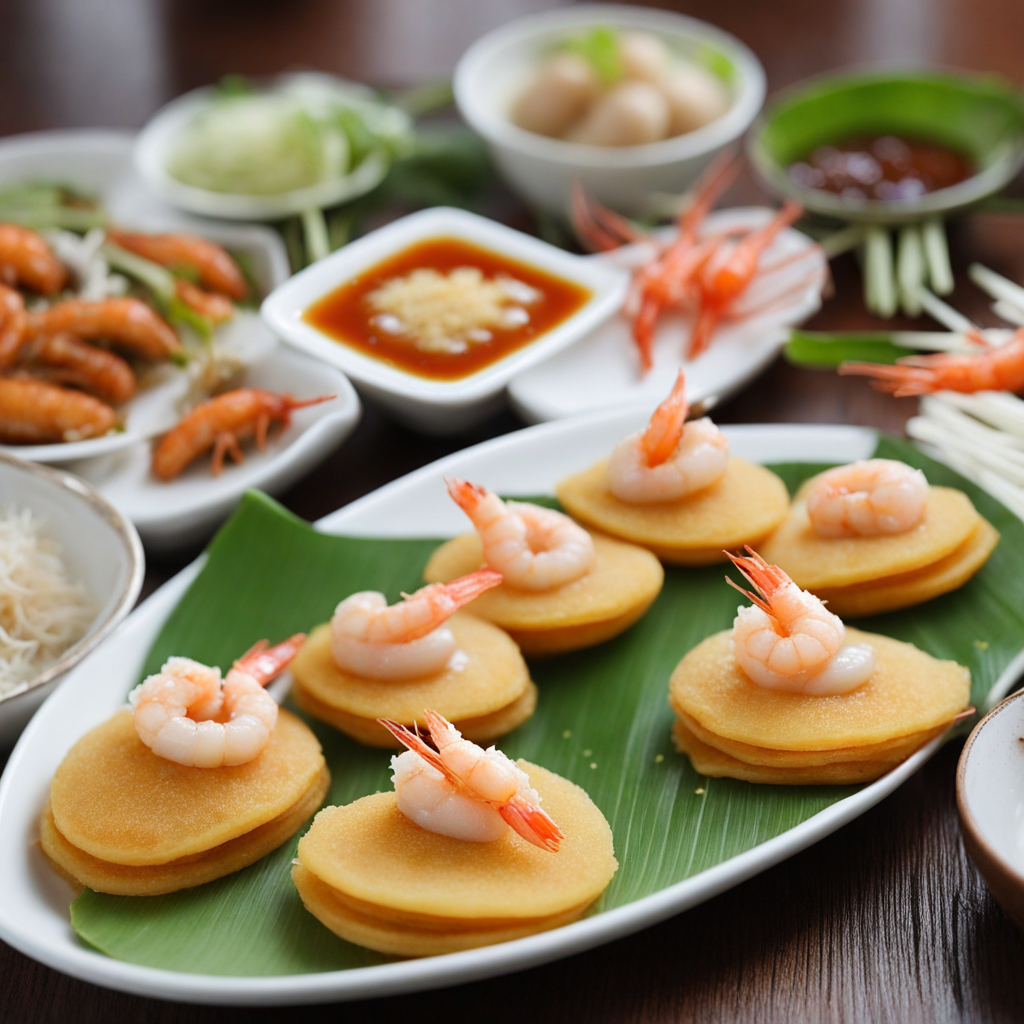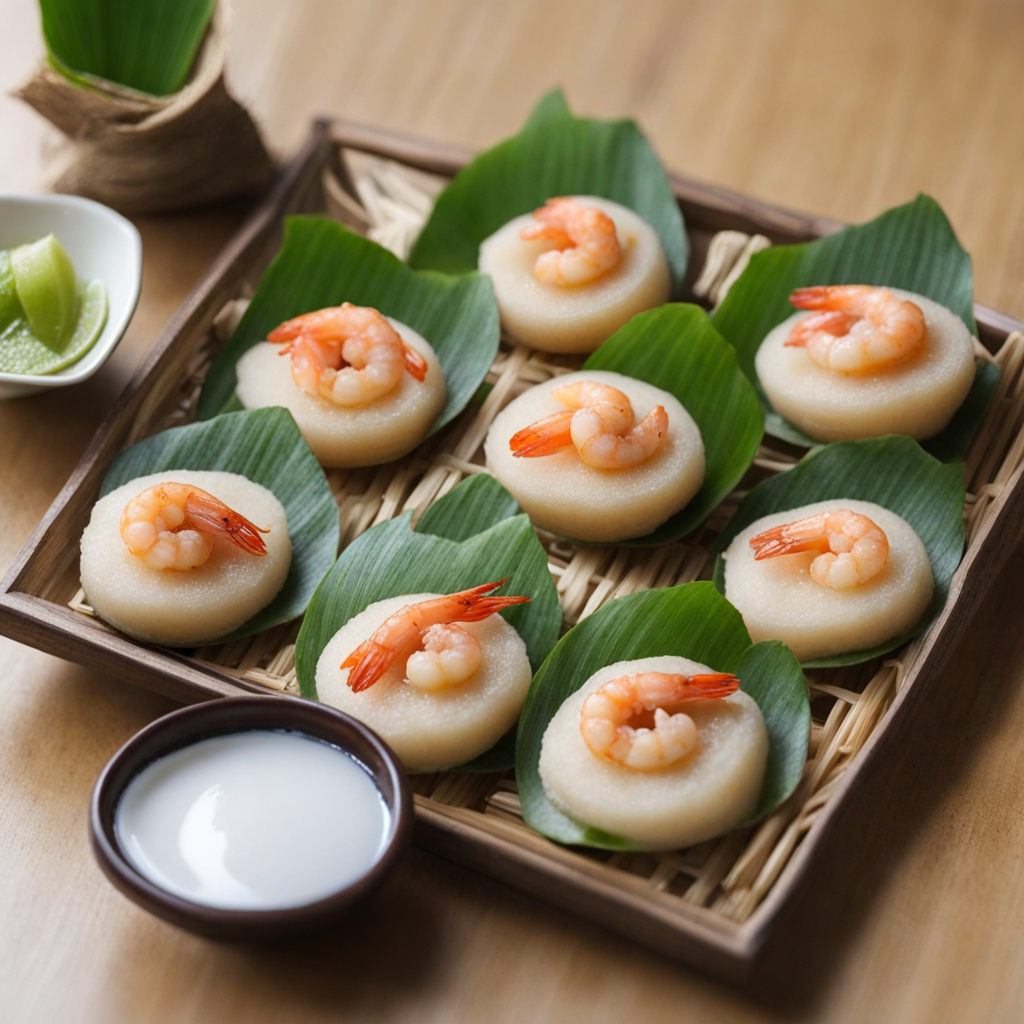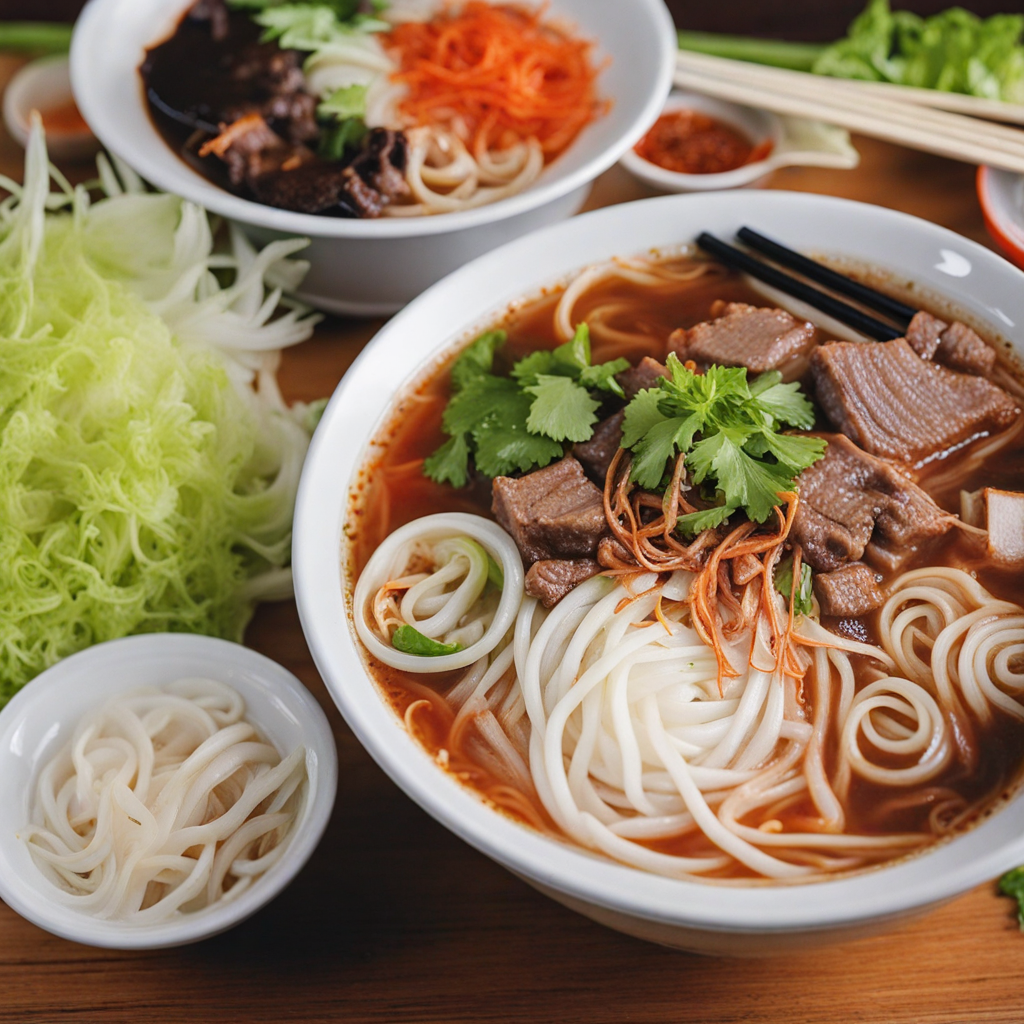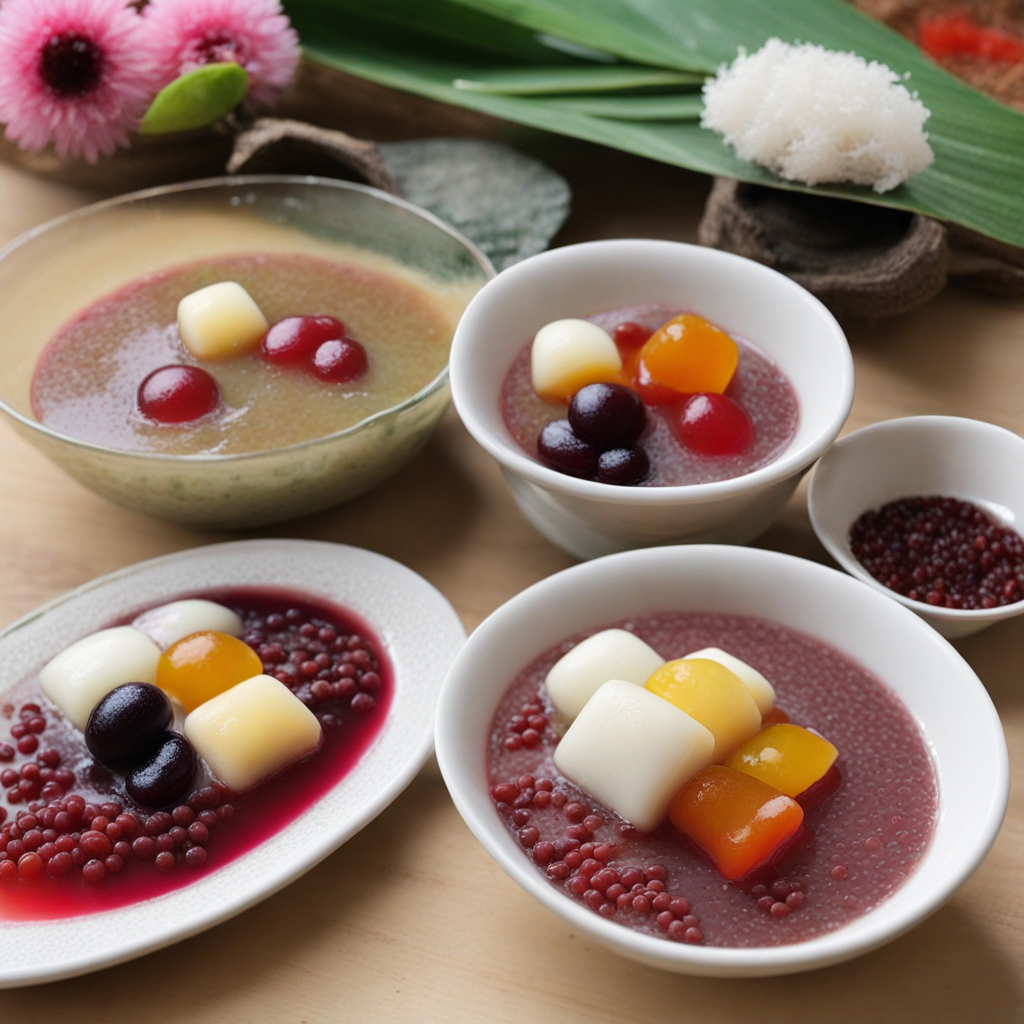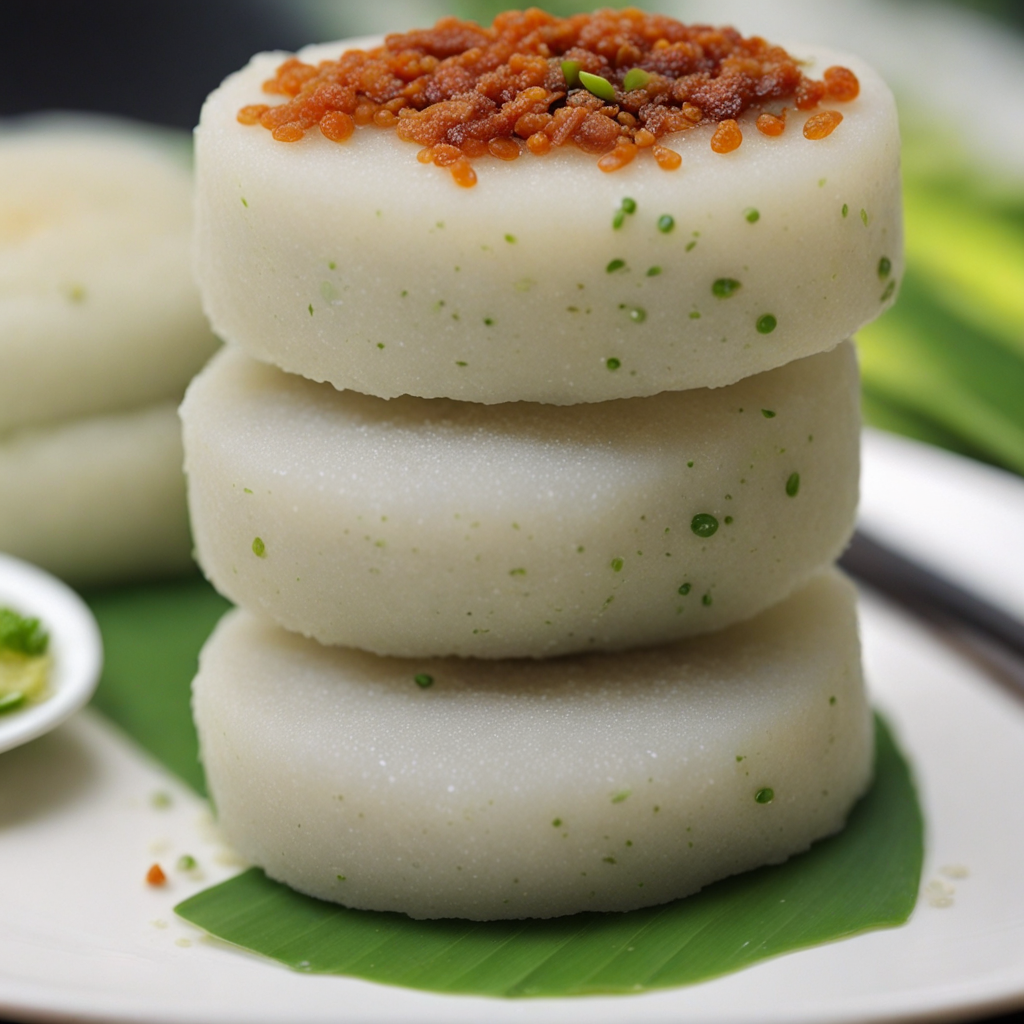Banh Khot
Banh Khot is a delightful Vietnamese dish that presents a unique twist on traditional pancakes. These mini pancakes are made from a rice flour batter, which is combined with coconut milk to create a rich and creamy texture. The batter is poured into small, round molds, often made from cast iron or clay, and cooked until they develop a crispy golden crust. The base is typically infused with turmeric, giving it a vibrant yellow color that entices the eyes before it even touches the palate. What sets Banh Khot apart is its filling, which usually consists of shrimp, pork, or a combination of both, along with bean sprouts and green onions. As the batter cooks, the toppings meld beautifully with the pancake, creating an irresistible blend of flavors. The dish is often served with fresh herbs, such as mint and cilantro, along with a side of dipping sauce, usually a mixture of fish sauce, lime juice, sugar, and chili. This adds a tangy and savory kick that perfectly complements the richness of the pancakes. When enjoying Banh Khot, the experience is all about balance. You can wrap the crispy pancakes in lettuce leaves, adding a refreshing crunch, and then dip them into the sauce for a burst of flavor with each bite. The contrast between the crispy exterior and the tender filling creates a satisfying texture, while the fresh herbs and dipping sauce elevate the dish to a new level. Discovering Banh Khot is not just about tasting a new food; it's an exploration of the harmonious flavors and textures that define Vietnamese cuisine.
How It Became This Dish
The Delicious Journey of Bánh Khọt: A Culinary Delight from Vietnam #### Origins and Historical Context Bánh Khọt, a beloved Vietnamese dish, is a small, savory pancake that has gained fame for its unique flavor profile and delightful texture. This dish hails from the southern region of Vietnam, particularly from the coastal province of Bà Rịa-Vũng Tàu, which is known for its fertile lands and rich culinary heritage. The name "Bánh Khọt" itself comes from the sound of the batter being poured into the hot molds, reminiscent of a light 'khọt' sound. Historically, bánh khọt is believed to have its roots in the 17th century during the era of the Nguyen Lords, who were instrumental in promoting agricultural development in southern Vietnam. The dish likely evolved from the traditional rice cakes of the northern regions, as rice cultivation became more widespread in the south. The region's abundance of seafood, particularly shrimp and squid, influenced the local cuisine, leading to the incorporation of these ingredients into bánh khọt. #### Cultural Significance Bánh Khọt is not just a food item; it reflects the cultural identity and culinary traditions of the Vietnamese people. The dish is often served during family gatherings, celebrations, and festivals, symbolizing unity and togetherness. In Vietnam, food is a central aspect of social interaction, and bánh khọt serves as a medium for shared experiences. Traditionally, bánh khọt is enjoyed in a communal setting, where diners gather around a table, wrapping the pancakes in fresh herbs and lettuce before dipping them in a tangy fish sauce. This interactive dining experience fosters a sense of connection and enhances the enjoyment of the meal. The act of preparing and serving bánh khọt often involves family members working together, emphasizing the importance of collaboration and harmony in Vietnamese culture. #### Ingredients and Preparation The preparation of bánh khọt is an art form in itself. The primary ingredients include rice flour, coconut milk, turmeric, and a variety of fillings, typically shrimp, squid, or pork. The rice flour is blended with coconut milk to create a smooth batter, which is then infused with turmeric to impart a vibrant yellow hue. This natural coloring agent not only enhances the visual appeal of the dish but also adds a subtle earthy flavor. The batter is poured into small, round molds, traditionally made of cast iron, which are heated over an open flame. A piece of filling, usually a shrimp or a small piece of pork, is then placed in each mold. The pancakes are cooked until their edges turn crispy and golden brown while the centers remain soft and fluffy. The final touch is a sprinkle of green onions, adding both flavor and a pop of color. Once cooked, bánh khọt is typically served with a platter of fresh herbs such as mint, cilantro, and lettuce, alongside a bowl of nước chấm, a sweet and savory dipping sauce made from fish sauce, lime juice, sugar, and chili. This combination of flavors and textures is what makes bánh khọt a truly delightful culinary experience. #### Evolution and Regional Variations Over the years, bánh khọt has evolved, and various regional adaptations have emerged throughout Vietnam. Each region has its own take on the dish, influenced by local ingredients and culinary practices. For instance, in the Mekong Delta region, bánh khọt may be topped with more exotic seafood varieties, while in urban centers like Ho Chi Minh City, street vendors often introduce innovative fillings and modern twists, such as the use of different meats and vegetables. The rise of tourism in Vietnam has also contributed to the globalization of bánh khọt. As international visitors discover this culinary gem, local chefs have begun to experiment with fusion flavors, incorporating influences from other cuisines while still honoring the traditional foundation of the dish. This evolution reflects the adaptability of Vietnamese cuisine, which has always embraced change while maintaining its core identity. #### Modern-Day Popularity Today, bánh khọt is a staple in Vietnamese cuisine, cherished both locally and internationally. It can be found in numerous restaurants and street food stalls across Vietnam, and as Vietnamese cuisine gains global recognition, bánh khọt has made its way onto menus in restaurants around the world. The dish has become a symbol of Vietnamese culinary heritage, celebrated for its vibrant flavors and interactive dining experience. In addition to its presence in restaurants, bánh khọt has also found its way into home kitchens. Many Vietnamese families take pride in passing down traditional recipes through generations, ensuring that this beloved dish remains a significant part of family gatherings and celebrations. Home cooks often personalize their bánh khọt, experimenting with different fillings and herbs, creating a unique version that reflects their family's tastes and traditions. #### Conclusion Bánh Khọt is more than just a delicious pancake; it is a reflection of Vietnam's rich cultural history and culinary diversity. From its humble origins in the southern coastal provinces to its status as a cherished dish enjoyed by families and tourists alike, bánh khọt embodies the spirit of Vietnamese cuisine—an intricate blend of tradition, creativity, and communal enjoyment. As we savor each bite of this delightful pancake, we are not only indulging in a delicious meal but also engaging with a deep-rooted cultural narrative that spans centuries. Whether enjoyed at a bustling street stall or prepared in the warmth of a family kitchen, bánh khọt continues to bring people together, celebrating the flavors of Vietnam and the joy of shared meals.
You may like
Discover local flavors from Vietnam


